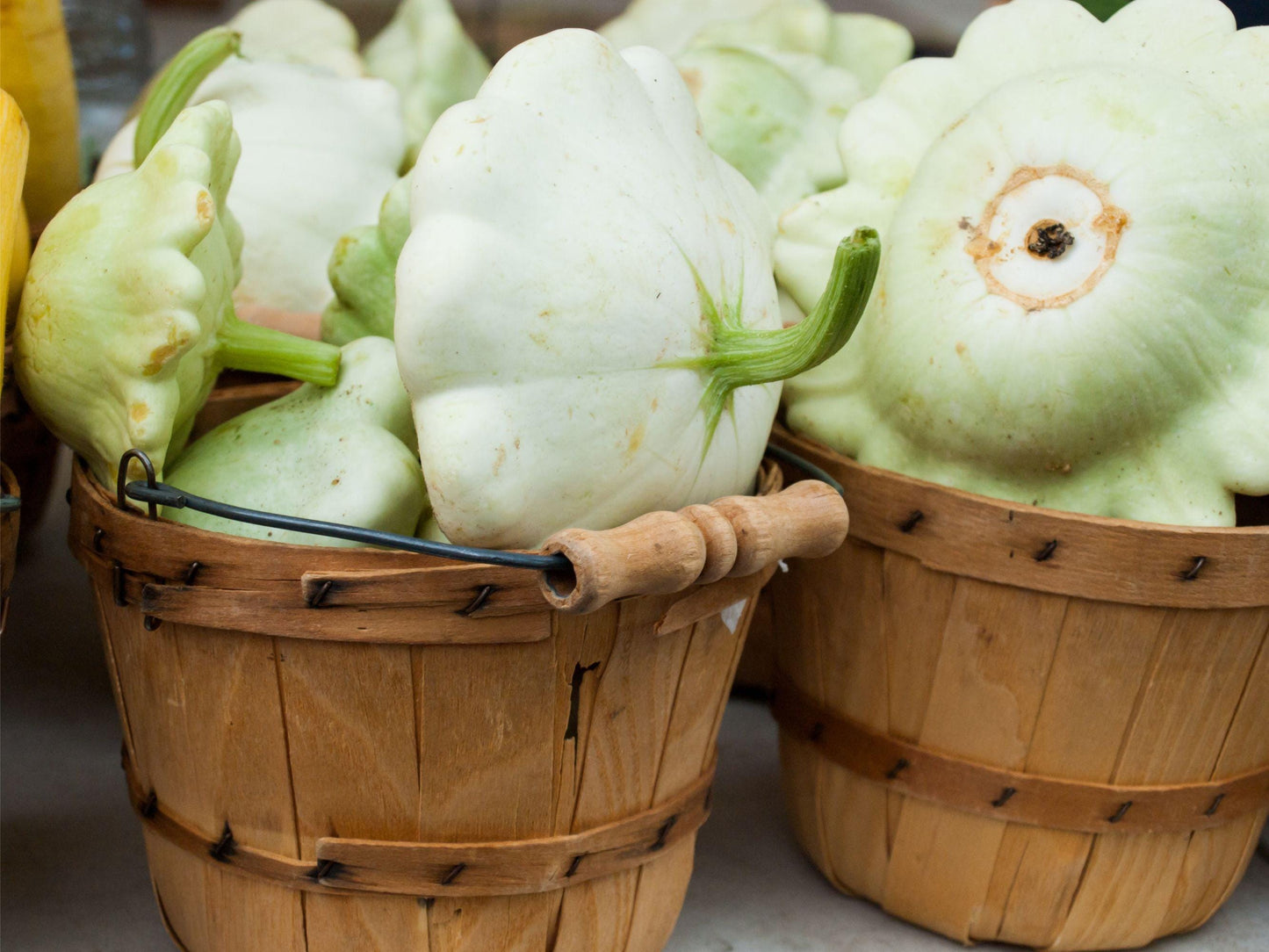Bennings Green Tint Squash is an heirloom, open-pollinated "patty pan" type that is highly regarded as one of the best tasting summer squash varieties. Easy to grow bushy plants have excellent yields and keeps well into the winter. 50 days.
It takes about 50 days to reach full size. Great fried, baked, or even raw. Flat fruit with scalloped edges--beautiful! If you love summer squash, you won’t be able to get enough of this variety. Pretty enough to display in a bowl on your kitchen counter.
This unusual squash is of the "patty pan" type, a saucer shaped squash with scalloped edges. After being introduced in 1914, Benning's Green Tint Squash was featured in the 1937 issue of Cucurbits of New York, a journal dedicated to innovative plant species.
One of the earliest known squashes, this ancient Native American heirloom was grown by the Northern Indians for hundreds of years. It was possibly known in Europe as early as 1591 and called a "symnel" or "cymling". This bush type plant is one of the best-tasting and highest-yielding varieties still around today!
~ sowing ~
Those with short growing seasons may want to start their squash seeds indoors a month before the last expected frost. Since squashes do not take well to transplanting, peat pots are the best option.
Plant two seeds per pot, later clipping off the weaker seedling. Harden the seedlings by exposing them to the weather for several hours at a time during the week before transplanting. About a week after the last frost or when the soil temperature reaches an average of 65 degrees F, plant the seedlings in very rich soil 8-10' apart in rows 10-12' apart.
Another option is to plant the seedlings in hills of two, 8-10' apart. To direct sow, plant seeds when the soil temperature reaches at least 70 degrees F. Plant seeds 1/2" deep, 3-4' apart and thin to 8-10' apart.
For companion planting benefits, plant squashes along with corn but avoid planting them with potatoes.
~ growing ~
Since squash seedlings do not tolerate frost, provide protective coverings if the temperature drops below 65 degrees F. Keep the soil moist at all times, but avoid getting the leaves wet as this can cause diseases such as rot or mildew.
When the vines begin to develop, a layer of mulch will help conserve moisture and control weeds; mulch also will keep the squashes clean and protect them from too much soil contact.
~ harvesting ~
These squashes generally taste best when harvested at a diameter of 2-3". The vines produce abundantly throughout the summer; the squashes keep well in the refrigerator for about two weeks and freeze well.
~ seed saving ~
By the time the squash reaches its mature size, the seeds are mature. Cut the squash open, remove the pulp and seeds, and rinse off the pulp. Put the mixture in a bowl of water to remove the remaining pulp; the good seeds will sink.
Remove the good seeds and spread them out to dry for 2-3 weeks, stirring them at times to make sure they dry completely. Store squash seeds in a cool, dry place for up to 4 years.
~ planting ~
Gardeners with short growing seasons may want to start their squash seeds indoors a month before the last expected frost. Since squashes do not take well to transplanting, peat pots are the best option. Plant two seeds per pot, later clipping off the weaker seedling. Harden the seedlings by exposing them to the weather for several hours at a time during the week before transplanting. About a week after the last frost or when the soil temperature reaches an average of 65 degrees F, plant the seedlings in very rich soil 8-10' apart in rows 10-12' apart. Another option is to plant the seedlings in hills of two, 8-10' apart. To direct sow, plant the seeds when the soil temperature reaches at least 70 degrees F. Plant them 1/2" deep, 3-4' apart and thin to 8-10' apart. For companion planting benefits, plant squashes along with corn but avoid planting them with potatoes.
~ growing ~
Since squash seedlings do not tolerate frost, provide protective coverings if the temperature drops below 65 degrees F. Keep the soil moist at all times, but avoid getting the leaves wet as this can cause diseases such as rot or mildew. When the vines begin to develop, a layer of mulch will help conserve moisture and control weeds; mulch also will keep the squashes clean and protect them from too much soil contact.
~ harvesting ~
These squashes generally taste best when harvested at a diameter of 2-3". The vines produce abundantly throughout the summer; the squashes keep well in the refrigerator for about two weeks and freeze well.



















